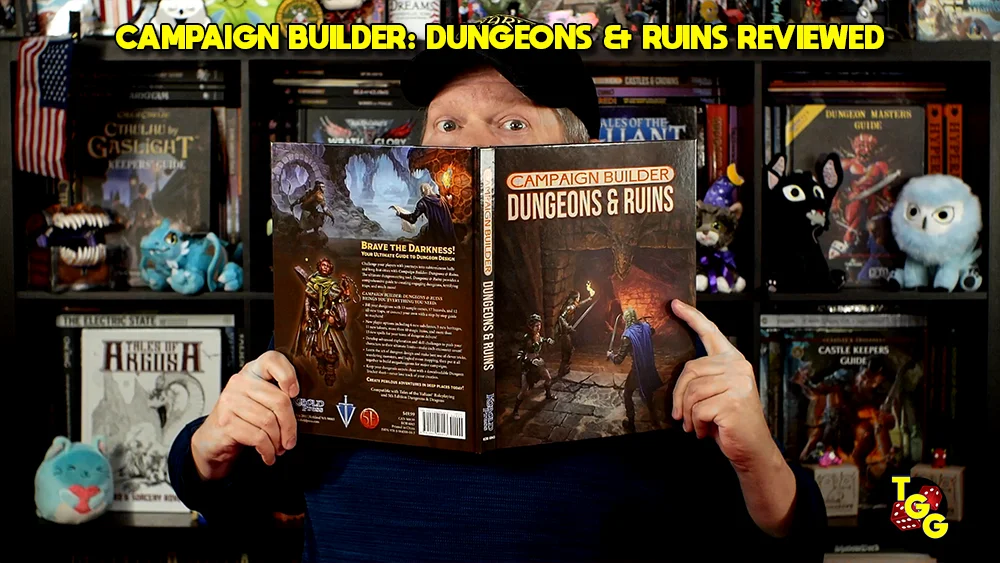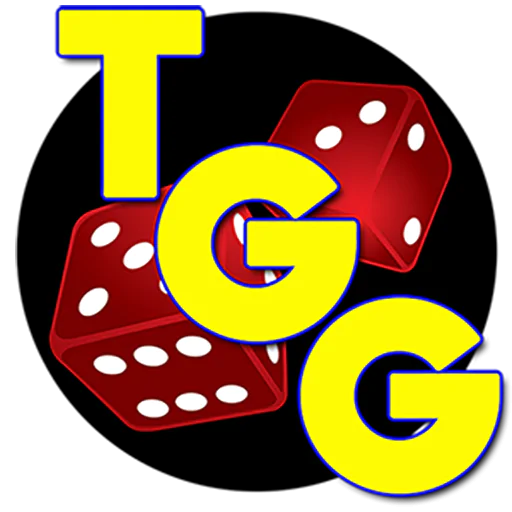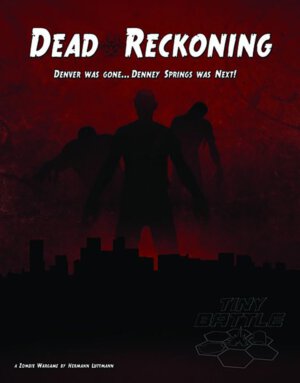
Publisher: Tiny Battle Publishing
Designer: Hermann Luttmann
Artist: Tim Allen
Year: 2016
Genre: Strategic wargame of a zombie outbreak
Players: Two players
Ages: 10+
Playing Time: Around 120 minutes
MSRP: $31.00
Dead Reckoning is the latest game release from my good pal Hermann Luttmann and, like nearly every one of his designs, there’s more than initially meets the eye with this game. I’m sure many of you have become familiar with Hermann and his games due to his breakout hit Dawn of the Zeds from Victory Point Games. That was a zombie game too (and a very meaty and extremely well received solitaire one at that) so folks out there may be thinking this new title may be a pared down version of DotZ aimed at getting some juice flowing for Tiny Battle Publishing. Put your mind at easy gentle reader because Dead Reckoning is certainly an original design and quite a bit of fun, I may add.
Dead Reckoning is a two player head to head match up where one controls the zombies, which have overwhelmed the city of Denver and moved on into the outlaying towns, and the other takes command of the plucky citizens of nearby Denney Springs. The zombies are aiming to feast on the townsfolk (of course) while many of the small town’s citizens seek the shelter of the nearby mountains without becoming zed chow. While this might not sound like the most original zombie game concept, the design itself more than makes up for it.
Upon opening the zip lock bag you’ll find a short rulebook, four decks of cards (54 in total), a counter sheet, two player aids, and a paper map. Overall these are pretty nice quality as far as folio games tend to go (although I’ll have more to say about that later) and I will mention the cards are actually much sturdier stock than I would have expected but I would recommend sleeving the cards since they will be shuffled a lot. I’ll also mention Tim Allen provides his usual noteworthy graphic work as Hermann’s go to guy. A quick note before I begin as our recently revised focus with reviews here at TGG is less about mechanics – or a simple rehashing of the rulebook – and more towards actually playing a game, so I’m going to mainly tackle on what makes Dead Reckoning different and fun.
Each player will have a variety of units at their disposal during the game as the humans control army, civilian, and refugee groups while the zombie player has hordes, mobs, and packs. Rather than assigning numerical values for fire combat, close combat, defense, and movement each counter will display a letter representing a trait. So instead of say your SWAT team showing something more traditional like 7/4/4, the letters on that counter actually read H-A-F. This means the SWAT team is armed with heavy weapons, wearing body armor, and on foot but move fast. You might find a zombie counter which reads B-I-W which equates to them being in a berserk state, tough as iron, while they can only walk. I found this to be a pleasant deviation from the norm, as far as hex and counter games, because these letters provide a bit of flavor and story to the units as opposed to just staring at a bunch of numbers.
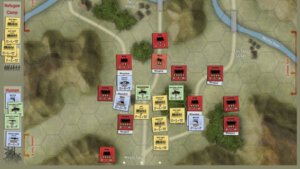
The player can choose from a good number of actions available including movement, opening fire, triage, calling for reinforcements, and more. The zombie player has a few less options as they can swarm into an attack, gather multiple zombies to swarm, or create a wall of zombies. Granted this might make it seem the zeds are less fun to play that humans but it really isn’t the case because the undead also get to terrorize the living thus making them easier to munch upon. Sure, the zeds are a touch hamstrung sometimes as far as what units they have to move toward but they are mindless eating machines after all.
Combat resolution is fairly simply since you’re not worrying about numeric combat values, range reductions, or referring to combat results charts. In Dead Reckoning all the ranged fire and melee results are revealed through each player’s combat deck. Simply draw the top card of each deck and look at the appropriate sections and combine the modifiers. If a human army unit with heavy weapons opens up on a zombie unit you might read “One hit if heavy weapons” on the human card and “No effect” in the fire combat defense section of the zombie card. In the end the humans deal a hit on the zombies thus causing the counter to be flipped to the reduced strength side if that’s the first damage it received or eliminated if not. Essentially, you just peek at two cards and easy peazy.
Close combat is resolved in the same way but you also take into account how terrifying the zombie unit may be in the melee. Each human unit has a bravery factor and it’s possible, if the zombie’s fear factor is higher than bravery, the humans can take extra damage due to panic. You might also want to take note many of the civilian units have higher bravery than the army. The reasoning behind this is the townsfolk have been fighting the undead for a few days so they’re more accustomed to being up close and personal with the zombies than the National Guard units.
I should also mention there’s a “Chaos” indicator on some of the cards so if both the human and zombie player draw one of these chaos cards at the same time then a special event takes place. The humans might get to call in an air strike or one of the human units might become infected and become the walking dead. This is yet another wrinkle to add some uniqueness to each game of Dead Reckoning.
Once the action rounds are completed, the human player will draw a card to see how many refugees will be able to move. Keep in mind the biggest factor driving a human victory is getting the refugees to safety. These refugees are marked as VIPs who are valuable in the recovery of the zombie apocalypse, regular folks who obviously would help in a rebuilding society, and Riff-Raff who are the sort who hold little value to a world on the brink of destruction (board game reviewers as an example). While holding buildings in Denny Springs and just having refugees survive is important, moving them off the map is key.
There are some additional things which come into play like the humans having a hero (buzzing around on a motorcycle no less), indicating a critical human or zombie battle, special buildings, terrain affecting movement, reinforcements, and so forth. I mentioned previously I’m not going to bog down with every little detail but suffice to say all of these simply enhance gameplay.
Once the six turns are completed, the players will tally up victory points for buildings, refugees, and human units eliminated. The total VPs will determine if humanity has been saved or the undead apocalypse is at hand. As previously mentioned, the human player really has to focus on getting those high value refugees to bug out to come off with a win. The zombie player, on the other hand, can begin the apocalypse by attacking anything that moves and trying to munch on as many refugees as possible.
Dead Reckoning is a really fun game and there’s plenty to it to recommend. For such a small footprint, you’ll find a good amount of gameplay packed inside; most games should take about 90 minutes or more to complete and the various wrinkles make each playthrough unique. You can certainly chalk this up as another successful and very entertaining Hermann Luttman design!
While Dead Reckoning is great, I do have a bit of an issue with the game and that has to do with pricing. I’ll preface my criticism by saying Hermann is a good pal of mine and obviously the more money he makes from his designs is fantastic in my book and I’m not the sort who looks to take food out of anyone’s mouth. I’ll also point out I’ve met Mark H. Walker (owner of Tiny Battle Publishing) numerous times to interview him and I’ve always found him to be a cool cat, and mighty interesting to talk with, so I wish him nothing but success with both TBP and Flying Pig Games. Yet I think TBP would be best served taking a harder look at how they price their folio games.
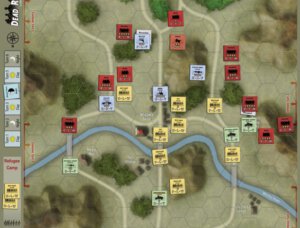
I certainly understand wargaming is an even more niche part of a niche hobby so I do expect to pay a little bit more for a wargame. Though I have to point out if you look at Mark Walker’s Vietnam wargame ’65 over at Flying Pig Games you can currently order that for $50 and that title has thick and chunky counters, cards, as well as mounted maps. It’s also a really good game so look for my review of it next week! But I think the reader may see where I’m coming from with this strange pricing disconnect I feel between the two games. Although each title is produced by a different company, the companies are owned by the same person and you can’t tell me copies of Dead Reckoning came in on a slow boat from China.
This is by no means me saying Dead Reckoning doesn’t have twenty-eight bucks worth of entertainment built into it by any stretch because it’s a blast. I’m not going to harp too much on components because there was a time when I was one of the only people operating a website to give Victory Point Games the time of day because of the quality of their print on demand. I just think I wouldn’t be doing my job as a reviewer if I didn’t mention Tiny Battle would be best served making a few small tweaks and maybe shaving a couple bucks off their prices.
At the end of the day I do think Dead Reckoning is a very good game and another successful Hermann Luttmann design. It’s light enough (and has that zombie element) so it makes for a good introduction to game with the old hex-and-counter look for non-grognards. At the same time there’s enough meat on the bone (well, what the zeds haven’t eaten) for serious wargamers to invest the two hours or so to enjoy the game without rolling their eyes and poo-pooing the design. I certainly had a great time leading my undead horde against my fifteen year old nephew.
On a final note, grognards will want to take note the same core design of Dead Reckoning is used in Hermann Luttmann’s Race to the Sea, which happens to be the game included in the current issue of Yaah! Magazine.
[rwp-review id=”0″]
- Tiny Cyberpunk has Landed in PDF - Apr 25, 2025
- Gary’s Appendix: Hardcover Omnibus is Up for Crowdfunding - Apr 25, 2025
- Save on the Coyote & Crow RPG through Bundle of Holding - Apr 25, 2025













